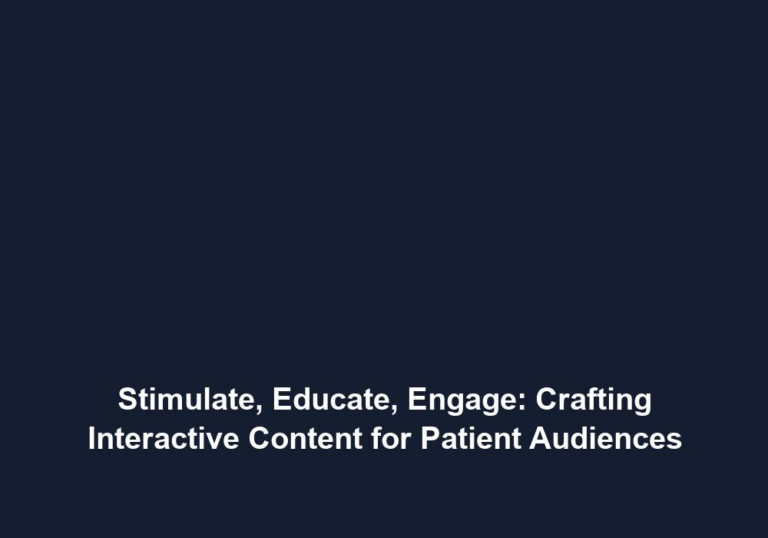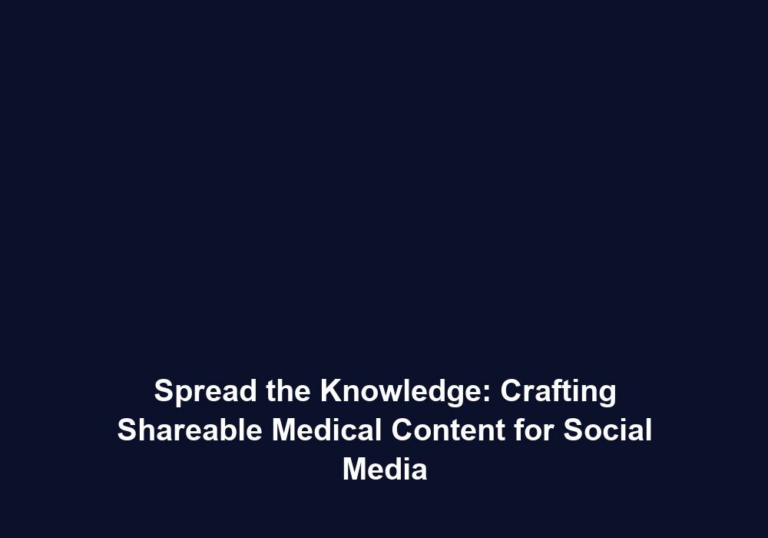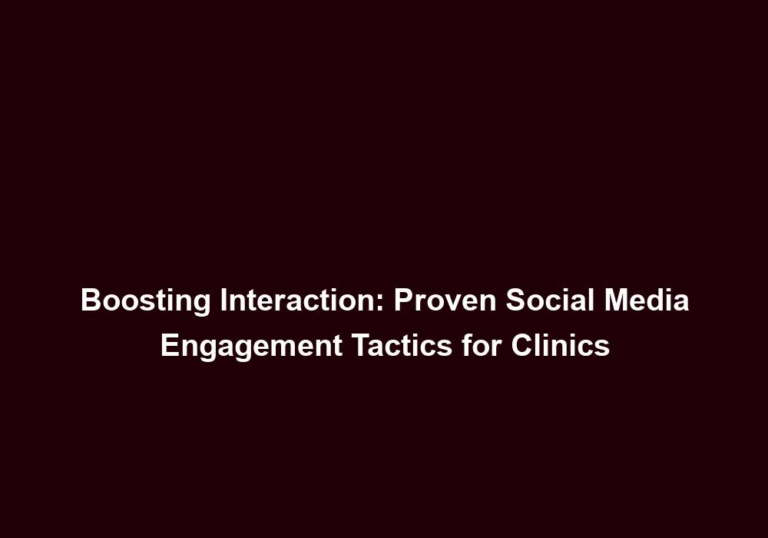Going Viral: How to Create Medical Content that Resonates
In today’s digital age, creating medical content that resonates with your audience is essential for driving traffic, building credibility, and increasing the overall visibility of your healthcare website. By understanding the key elements of effective SEO content writing, you can craft compelling articles that engage readers and establish your expertise in the medical field. In this article, we will explore the strategies and techniques that will help your medical content go viral.
Understanding Your Target Audience
Before diving into creating medical content, it is crucial to understand your target audience. Identifying the needs, interests, and preferences of your readers will enable you to tailor your content to their specific requirements. Conducting thorough research and creating buyer personas can provide valuable insights into the demographics, motivations, and challenges of your audience.
Understanding your target audience allows you to create content that speaks directly to their concerns, making it more relatable and engaging. Consider conducting surveys or interviews to gather information about their pain points, questions, and interests. This data will help you create targeted content that addresses their unique needs and positions you as a trusted source of information.
Conducting Keyword Research
Keyword research is a fundamental step in optimizing your medical content for search engines. By identifying relevant keywords and incorporating them strategically throughout your article, you can improve your website’s visibility and organic search rankings. Utilize keyword research tools such as Google Keyword Planner or SEMrush to discover popular medical terms and phrases that your target audience is searching for.
When conducting keyword research, focus on long-tail keywords that are specific to your medical niche. These keywords typically have lower search volumes but higher conversion rates, as they target users who are actively seeking specific information. For example, instead of targeting a broad keyword like “diabetes,” consider using long-tail keywords like “diabetes management tips for seniors” or “natural remedies for diabetes control.”
Crafting Engaging Headlines
The headline of your medical content plays a crucial role in capturing the attention of your readers. It should be concise, informative, and compelling, enticing visitors to click and read further. Consider using power words, numbers, or asking thought-provoking questions to make your headlines more engaging. For instance, a headline like “10 Life-Saving Tips for Managing Diabetes” would likely attract more readers compared to a generic title such as “Diabetes Management Tips.”
In addition to engaging readers, your headline should also include relevant keywords to improve its visibility in search engine results. Incorporate your primary keyword naturally into the headline while maintaining its readability. Aim for a balance between creativity and SEO optimization to create headlines that grab attention and rank well in search engines.
Creating an Introduction that Hooks
Once you have enticed readers with your headline, it is vital to hook them with a captivating introduction. The introduction should provide a clear overview of the topic, highlight the value your article offers, and create a sense of intrigue. Engage your readers right from the beginning and make them eager to explore the entire article.
To create a compelling introduction, consider starting with a relatable anecdote, a shocking statistic, or a thought-provoking question. This will immediately grab your readers’ attention and make them curious to learn more. Clearly state the purpose of your article and how it will benefit your audience. Remember to keep the introduction concise yet informative, setting the stage for the rest of the content.
Utilizing Subheadings and Bulleted Lists
Subheadings and bulleted lists make your medical content more scannable and digestible for readers. Breaking down your content into sections benefits both the readers and search engines. Subheadings allow readers to quickly navigate through the article and find the information they are looking for. Additionally, search engines use subheadings to understand the structure of your content and rank it accordingly.
When using subheadings, make sure they are descriptive and accurately represent the content that follows. This helps readers skim through the article and locate the sections that are most relevant to them. Bulleted lists are effective for presenting information in a concise and organized manner. Use bullet points to highlight key takeaways, important facts, or steps in a process. This improves readability and ensures that readers can easily grasp the main points of your article.
Providing Accurate and Credible Information
When creating medical content, accuracy and credibility are of utmost importance. Ensure that your articles are well-researched, citing reputable sources and medical studies to back up your claims. Providing accurate information not only establishes your authority but also fosters trust with your audience. Be cautious of spreading misinformation or making unsupported claims that could potentially harm your readers.
To maintain accuracy and credibility, rely on reputable medical journals, government websites, and well-established medical organizations as your sources. Avoid using outdated or biased information that may compromise the reliability of your content. If you present statistics or data, always include the source and date of the information. This transparency instills confidence in your readers and reinforces your expertise in the medical field.
Engaging with Visual Content
Integrating visual content into your medical articles can significantly enhance the user experience and improve engagement. Use relevant images, infographics, or videos to complement your written content and convey complex medical information in a more digestible manner. Visual content not only captures attention but also increases the likelihood of social sharing and going viral.
When incorporating visual content, ensure that it is directly related to the topic and supports the information you are presenting. Use high-quality images and graphics that are visually appealing and easy to understand. Infographics are particularly effective in summarizing complex medical concepts or presenting statistical data. Videos can be used to demonstrate medical procedures, provide expert interviews, or offer educational content. By combining visual and written content, you create a multimedia experience that engages your audience on multiple levels.
Incorporating Internal and External Links
Internal and external linking is an essential SEO strategy in medical content writing. Internal links allow readers to navigate through your website, explore related topics, and spend more time on your site. External links, on the other hand, add credibility to your content by referring to reputable sources and medical associations. When incorporating links, ensure they are relevant, add value, and are naturally placed within the text.
When adding internal links, choose anchor text that accurately describes the destination page. This helps search engines understand the context and relevance of the link. Additionally, use a mix of deep links (linking to specific blog posts or pages) and homepage links to improve the overall navigation of your website. For external links, select reputable sources that provide additional information or support your claims. These external links demonstrate that you have done thorough research and are well-informed about the topic.
Optimizing for Readability and SEO
Creating medical content that is both readable for humans and optimized for search engines is a delicate balance. Use short paragraphs, bullet points, and subheadings to break down your content into easily digestible chunks. Additionally, aim for a conversational tone to make your articles more engaging and accessible to a wider audience. Don’t forget to incorporate relevant keywords naturally throughout the text to improve your search engine rankings.
To optimize readability, keep sentences and paragraphs concise. Use simple language and avoid jargon or complex medical terms unless necessary. Break up long paragraphs into shorter ones to make the content easier to skim. Incorporate transition words and phrases to guide readers through the article smoothly. When it comes to SEO optimization, sprinkle relevant keywords throughout the content, including in subheadings and meta tags. However, avoid keyword stuffing, as it can negatively impact the readability and credibility of your content.
Encouraging Social Sharing and Interaction
To increase the chances of your medical content going viral, encourage social sharing and interaction among your readers. Include social sharing buttons on your website to make it easy for readers to share your articles on various platforms. Additionally, engage with your audience through comments, forums, or social media platforms to foster a sense of community and encourage discussion around your content.
Respond to comments and questions promptly, providing helpful and informative replies. Engage with your audience on social media by sharing valuable content, participating in relevant discussions, and addressing their concerns. Encourage readers to share their thoughts and experiences related to the topic of your article. By fostering social sharing and interaction, you create a community of loyal followers who are more likely to share your content, increasing its reach and potential virality.
Conclusion
Creating medical content that resonates with your target audience requires a strategic approach that combines engaging writing, thorough research, and effective SEO techniques. By understanding your audience, conducting keyword research, crafting captivating headlines and introductions, and incorporating visual content and internal/external links, you can create articles that have the potential to go viral. Remember to prioritize accuracy, credibility, and readability, and foster social sharing and interaction to maximize the reach and impact of your medical content.







